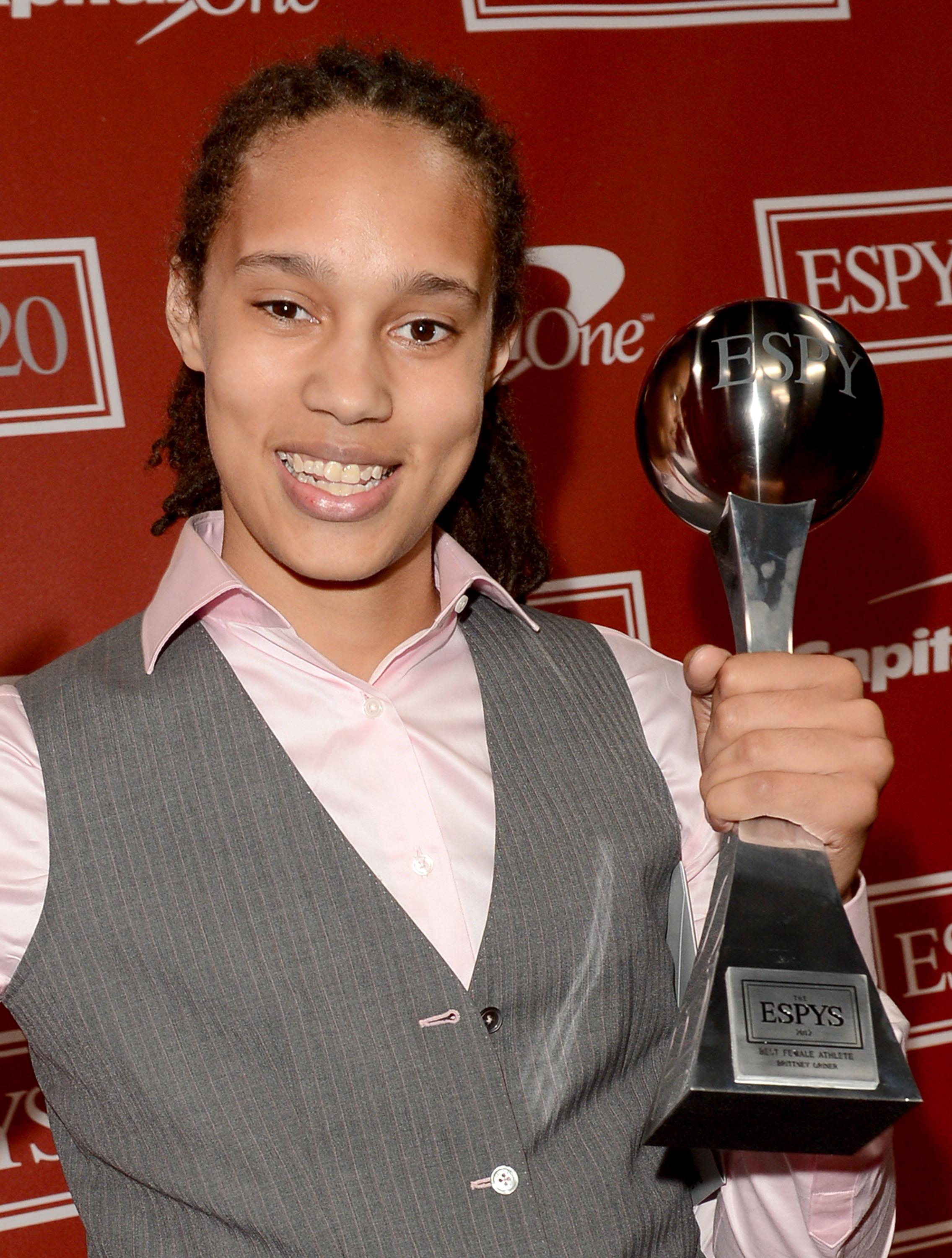Brittney Griner, the top WNBA draft pick and ex-Baylor center, and one of the most idolized female athletes on the court today, has come out as gay—except not really. She’s been out for a while. Her sexuality just didn’t surface in discussions with the media until last week. In a pre-draft interview with USA Today, Griner inched in that direction, praising her parents for supporting her through a spell of being bullied: “I hadn’t come out completely. It was kind of like, YOU KNOW … I just hadn’t said it. My dad and my mom have always told me, ‘Be who you are.’” Then, in an interview with the Associated Press on Wednesday, Griner breezily tossed in a few more words on the subject:
“It was hard, just being picked on for being different, just being bigger, my sexuality, everything. I overcame it and got over it. Definitely something that I am very passionate about. I want to work with kids and bring recognition to the problem, especially with the LGBT community.”
Sports Illustrated also interviewed Griner on Wednesday, alongside fellow draftees Elena Delle Donne and Skylar Diggins. “I’ve always been open about who I am and my sexuality,” Griner told reporter Maggie Gray. She went on to say that coming out “wasn’t hard at all. If I can show that I’m out and I’m fine and everything’s OK, then hopefully the younger generation will definitely feel the same way.”
In the past, we’ve found out about gay celebrities after long, exquisitely orchestrated coming out rituals, with press releases and talk show announcements and a lot of drama. But if our coming-out narratives traditionally feed on a clear sense of “before” and “after,” Griner’s been operating in the “after” phase for quite some time now. And no one’s really noticed or cared. She has made no effort to conceal that she’s gay, but she hasn’t underscored it either. The result is that all the news coverage have focused on her athletic ability (and, in fairness, whether her potential NBA tryout would be a farce).
Men’s sports aren’t so nonchalant. When CBS’ Mike Freeman reported in March that a current NFL player was considering coming out, the news sparked a huge amount of speculation about who this mysterious gay fellow could be. In her SI interview, Griner was at a loss to explain the double standard. “I really couldn’t give an answer on why [coming out as a male athlete is] so different,” she said. “Being one that’s out, it’s just being who you are.”
There are a few obvious reasons why it’s different. First, there are plenty of high-level female athletes who’ve already paved the way for Griner by coming out, while any active male athlete who announces he’s gay is a pioneer. Second, a handful of the traits we associate with female athletes—strength, heft, competitive fierceness—have a masculine valence, and we tend to (reductively) think of gay women as more masculine than straight women. On the other hand, idiotic stereotypes about gay guys (moonbeams and glitter and rainbows, as one colleague put it) don’t jive too well with our notion of the brawny sportsman. Gay men dance and shop, goes the tired thinking. Real men whack balls with sticks.
But in women’s sports at least, maybe Griner is proof that we are approaching a new normal of gay acceptance—one in which “coming out,” once a concrete and elaborate process, has turned fluid. Instead of formally declaring your sexuality, you live your life and wait for people to stumble across it.
